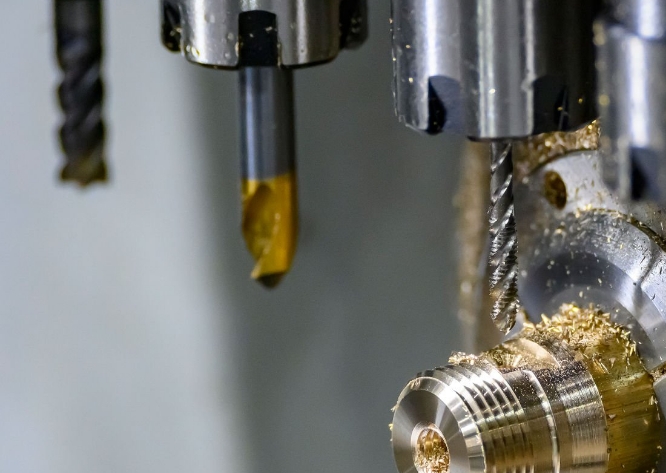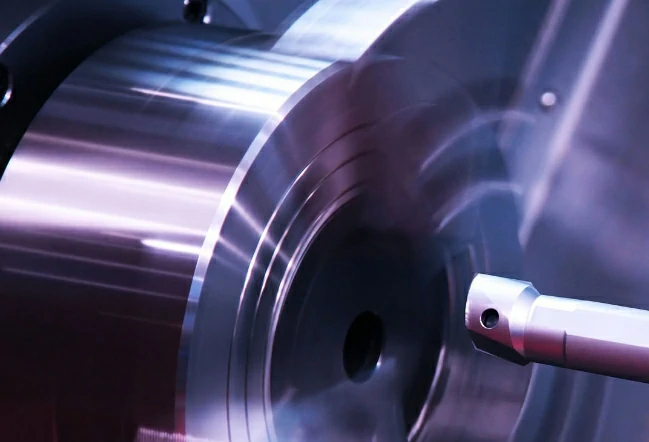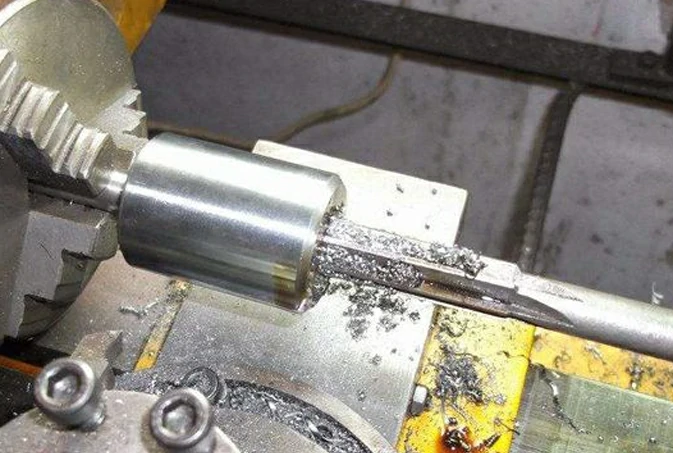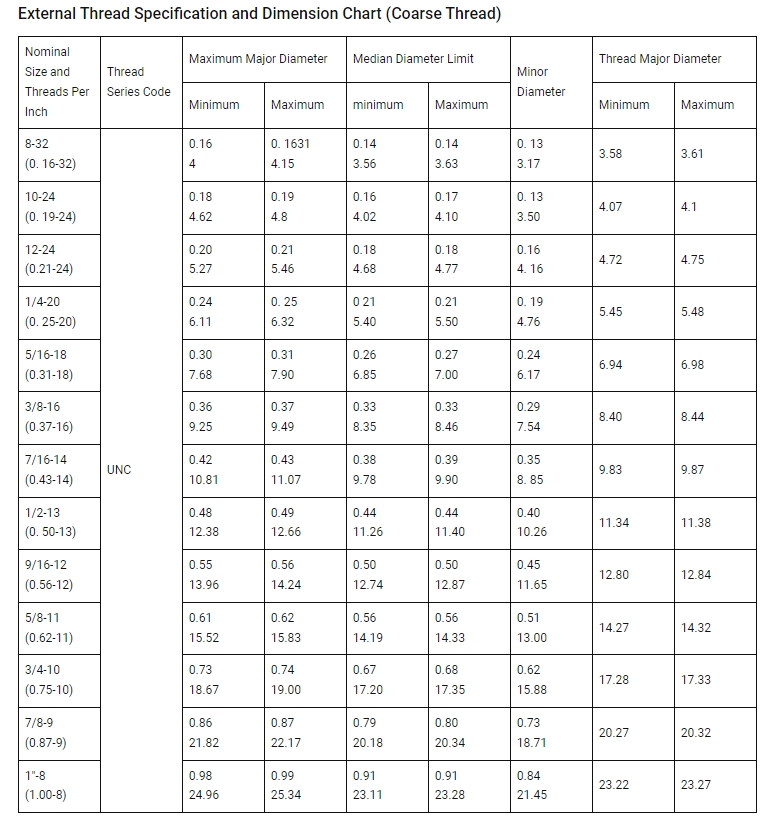In the manufacturing process, CNC machining techniques such as drilling, boring, and reaming are common methods used to process parts. While these machining methods may seem similar on the surface, they each have their own unique applications and advantages when it comes to machining materials.
If you’ve ever been interested in comparing the differences between drilling, boring, and reaming, this article will delve into the definitions, processes, and application variances of these three machining methods, helping you gain a better understanding of their roles and value in industrial production.
What’s CNC Drilling?

CNC drilling is an automated drilling process facilitated by computer numerical control (CNC) technology. In this process, pre-programmed instructions govern the machine tool to execute precise drilling operations according to specified parameters. Compared to traditional manual machine operation, CNC drilling offers superior machining accuracy and faster processing speeds.
During CNC drilling, operators write programs to specify the exact position and depth of the drill bit on the workpiece, as well as the rotational speed and feed rate of the drill bit. Upon receiving these instructions, the machine tool automatically adjusts the drill bit’s motion trajectory and cutting parameters to ensure drilling accuracy and consistency.
CNC drilling can also be combined with other machining operations such as milling, tapping, etc., enabling compound machining and further enhancing processing efficiency and product quality.
How CNC Drilling Works?
As a crucial technology in modern manufacturing, CNC drilling involves a meticulous workflow encompassing precise design, programming, tool selection, machine operation, and quality inspection. Below, we will delve into the detailed professional workflow of CNC drilling:
Step 1: CAD Design and Process Planning
At the outset of CNC drilling, engineers utilize specialized CAD (Computer-Aided Design) software to model the workpiece in three dimensions, clearly annotating key parameters such as hole positions, diameters, and depths. This step necessitates profound professional knowledge and a deep understanding of material machinability.
Subsequently, based on the structural characteristics and machining requirements of the workpiece, engineers devise detailed process plans, including selecting appropriate drilling cycles, cutting parameters, and tool paths. These decisions directly impact subsequent machining efficiency and quality.
Step 2: Professional Selection of Tools and Tool Holders
The selection of tools and tool holders is a crucial step in the CNC drilling process. Based on the material, hardness of the workpiece, and the size and depth of the holes, engineers need to choose drill bits with suitable geometric parameters and cutting performance. Simultaneously, the selection of tool holders must consider their rigidity, accuracy, and compatibility with the machine tool.
In practical operations, engineers also need to promptly replace worn-out tools to ensure machining stability and accuracy.
Step 3: High-Precision CNC Programming
Programming is the core step of CNC drilling. Engineers use specialized CAM (Computer-Aided Manufacturing) software to convert CAD designs into machine-readable G-code. During programming, engineers need to fully consider factors such as machine tool performance, cutting conditions, and machining efficiency to optimize tool paths and cutting parameters.
Moreover, for complex hole shapes or special machining requirements, engineers may utilize advanced programming techniques or special algorithms to achieve desired results.
Step 4: Drilling Operations with Precise Control
After programming is completed, engineers import the G-code into the CNC machine tool and perform preparatory work before machining. This includes workpiece clamping, tool installation, and machine tool debugging. Once everything is ready, the machine tool automatically performs drilling operations according to the preset program.
During drilling, the CNC system precisely controls servo motors and transmission mechanisms to achieve accurate positioning and high-speed rotation of the drill bit. Additionally, the system possesses real-time monitoring and feedback functions, enabling automatic adjustment of cutting parameters or issuing alarm signals based on machining conditions.
Step 5: Rigorous Quality Inspection and Post-Processing
Upon completion of drilling, the workpiece undergoes rigorous quality inspection. This involves using high-precision measuring equipment to measure and compare parameters such as hole positions, diameters, and depths, as well as inspecting the internal quality of the workpiece using non-destructive testing methods.
For any non-conforming products detected during inspection, engineers analyze the causes and take corresponding measures for repair or reprocessing. Additionally, necessary post-processing of the workpiece, such as deburring, cleaning, and rust prevention, is carried out to meet customer usage requirements.
Industry Applications of CNC Drilling
CNC drilling has unique demands and applications in various industries. The following are specific examples of CNC drilling parts in different industries, demonstrating their widespread applications:
| Industry | CNC Drilling Parts Examples |
|---|---|
| Automotive | 1.Mounting holes on engine blocks 2.Connection holes in suspension components 3.Bolt holes on wheel hubs 4.Holes on brake discs 5.Fixing holes on fuel tanks and radiators |
| Aerospace | 1.Connection holes in aircraft fuselage structures 2.Mounting holes for turbine blades 3.Bracket holes on wings 4.Instrument panel holes in cockpit walls 5.Connection holes in landing gear components |
| Electronics | 1.Connector holes on circuit boards 2.Fixing holes on electronic device casings 3.Camera holes on handheld device casings 4.Speaker holes on smartphone screens 5.Mounting holes on power sockets |
| Medical Devices | 1.Fixing holes on prosthetic limb connectors 2.Connection holes on surgical instruments 3.Fixing holes on medical equipment casings 4.Implant holes for dental implants 5.Connection holes on medical supports |
| Industrial Machinery | 1.Flange connection holes 2.Mounting holes on machine tool bases 3.Connection holes on hydraulic cylinders 4.Fixing holes on industrial machine frames 5.Connection holes on conveyor belts |
| Energy Sector | 1.Mounting holes on turbine hubs 2.Connection holes on pipeline flanges 3.Fixing holes on generator casings 4.Connection holes on transmission tower structures 5.Mounting holes on solar panel brackets |
| Consumer Products | 1.Holes on kitchen appliance casings 2.Connection holes on smart speakers 3.Camera holes on electronic device casings 4.Fixing holes on handheld vacuum cleaners 5.Mounting holes on household appliance panels |
Put your parts into production today
All uploads are secure and confidential.
What’s CNC Boring?
The following are examples of CNC boring applications in various industries:

CNC boring refers to a machining process that utilizes computer numerical control (CNC) machine tools to perform boring operations. In this process, the CNC machine controls the boring tool with precision, enlarging or refining existing holes in the workpiece. The distinctive feature of CNC boring is its ability to correct eccentricity in holes, achieving precise hole positions and consequently higher roundness, cylindricity, and surface finish.
CNC boring operations are typically scheduled as the final step in CNC machining, as they involve fine tuning and processing of holes, ensuring that preceding machining steps are completed to achieve the highest accuracy and surface quality in the final stage. This machining method is more challenging compared to other mechanical machining techniques because it requires adjustments to a single cutting tool (or tool holder) to achieve micron-level bore diameters, such as H7, H6, etc.
How CNC Boring Works?
As a highly precise machining method, the workflow of CNC boring is rigorous and professional. Here are the detailed steps involved:
Step 1: Workpiece Design and Process Planning
Based on product drawings and machining requirements, engineers use CAD software to precisely design the workpiece and annotate key parameters such as hole dimensions, shapes, and positions for boring. Considering the material’s cutting performance and machining conditions, engineers develop appropriate process plans, including the sequencing of boring, selection of cutting parameters, and planning of tool paths.
Step 2: CNC Programming
Following the process plan, engineers use specialized CNC programming software to write G-code, translating the designed boring paths, cutting conditions, and other parameters into machine-executable programs. During programming, it’s crucial to consider the machine’s performance, the geometric parameters of cutting tools, and the machining characteristics of the workpiece material to ensure the accuracy and reliability of the program.
Step 3: Machine Setup and Tool Installation
After programming, operators need to perform a startup check on the CNC machine to ensure it’s in good working condition. Then, based on the programming requirements, they select suitable boring tools and install them on the machine’s spindle. During installation, it’s essential to ensure a secure and reliable connection between the tool and the spindle and adjust the tool’s geometric parameters to meet the machining requirements.
Step 4: Workpiece Clamping and Tool Setting
Place the workpiece on the machine table and securely fix it using fixtures. Then, use the machine’s tool setting function to precisely set the tools, ensuring accurate alignment between the tool and the workpiece. When setting up for CNC boring, it’s crucial to ensure appropriate tooling, machine readiness, adherence to operating standards, controlled precision, and safety precautions to maintain machining accuracy and personnel safety.
Step 5: Automatic Boring Process
Once the tool setting is complete, operators start the CNC machine, and it automatically performs the boring process according to the preset machining program. During machining, the machine controls the tool’s trajectory, cutting speed, feed rate, and other parameters with precision, achieving efficient and accurate boring. Additionally, the machine is equipped with various safety features to ensure the process is safe and reliable.
Step 6: Process Monitoring and Quality Inspection
Throughout the machining process, operators closely monitor the machine’s operation and machining quality. Using the machine’s monitoring system and measurement devices, they continuously check parameters such as tool wear, cutting temperature, and machining accuracy. If any abnormalities or deviations from quality standards are detected, adjustments to cutting parameters or other corrective measures should be promptly taken.
Step 7: Workpiece Unclamping and Post-Processing
After machining is complete, operators remove the workpiece from the machine and perform necessary post-processing tasks. This may include deburring, cleaning the workpiece, and conducting required inspections or measurements.
Industry Applications of CNC Boring
| Industry | CNC Boring Applications Examples |
|---|---|
| Aerospace | 1.Aircraft engine components 2.Aircraft fuselage structures 3.Aerospace instruments |
| Automotive | 1.Engine components 2.Brake system components 3.Body structure |
| Mechanical | 1.Gearboxes and transmission systems 2.Hydraulic and pneumatic components 3.Mechanical structures |
| Electronics | 1.Circuit board components 2.Communication equipment casings 3.Power equipment |
| Medical Devices | 1.Medical device components 2.Medical equipment casings 3.Dental equipment |
| Energy Sector | 1.Oil and gas drilling equipment 2.Power generation equipment 3.Renewable energy equipment |
Put your parts into production today
All uploads are secure and confidential.
What’s CNC Reaming?

CNC reaming is specifically used for precision machining of holes in workpieces. During this process, the cutting tool – reamer, is placed on the workpiece and rotated and fed through precise control of CNC machine, thus machining the holes on the workpiece into the required shape and size.
The machining target of CNC reaming is typically round holes, but it can also process holes of other shapes. The main purpose of reaming is to improve the dimensional accuracy and surface quality of the holes to meet product design and usage requirements.
How CNC Reaming Works?
The workflow of CNC reaming is a precise and systematic process that involves multiple key steps to ensure the machining accuracy and quality of the holes. The following is the main workflow of CNC reaming:
Step 1: Preparatory Work
The workpiece needs to be precisely positioned on the worktable and securely clamped using dedicated fixtures. Then, based on the material of the workpiece and reaming requirements, choose an appropriate reamer and perform meticulous tool installation. The geometric parameters of the reamer (such as the number of teeth, angles, etc.) and material should match the machining requirements.
Step 2: Parameter Setting and Programming
Based on the hardness of the workpiece material, cutting force requirements, and machine tool performance, precisely set cutting speed, feed rate, and cutting depth. Then, using professional CAD/CAM software or machine tool control system, develop detailed reaming machining programs. The program needs to accurately describe the tool’s motion trajectory, cutting conditions, and machining sequence to ensure the continuity and stability of the machining process.
Step 3: Machining Process
Before formal machining, verify the prepared machining program to ensure accuracy and then load it into the CNC machine tool. Utilize the tool setting device and measuring tools of the machine tool to accurately set the tool and calibrate its position, ensuring the accurate alignment between the reamer and the workpiece. Then, start the reaming process on the CNC machine tool. During the machining process, monitor cutting forces, temperature, and other parameters in real-time using the machine tool’s monitoring system and sensors to ensure stability and safety.
Step 4: Post-processing and Inspection
Once the reaming process is complete, the machine tool stops automatically. The CNC machine operator should follow specifications to remove the workpiece from the machine tool. Then, use professional measuring tools (such as bore gauges, microscopes, etc.) to precisely measure the finished holes, assess whether their dimensional accuracy, shape accuracy, and surface quality meet design requirements.
Industry Applications of CNC Reaming
The following are specific examples of parts machined using CNC in various industries:
| Industry | CNC Reaming Parts Examples |
|---|---|
| Aerospace | 1.Internal cooling channels in turbine engine blades 2.Internal passages in aircraft wing structures 3.Internal support structures in aerospace instrument control panel housings. |
| Automotive | 1.Internal oil lubrication passages in engine camshafts 2.Internal cooling grooves in brake discs 3.Internal lubrication oil flow passages in gearbox casings. |
| Mechanical | 1.Seal ring grooves and hydraulic fluid passages in hydraulic cylinders 2.Internal fluid flow passages in pump bodies 3.Internal coolant passages in machine tool spindles. |
| Electronics | 1.Circuit board connection holes in communication equipment motherboards 2.Internal circuitry connection channels in power adapter casings 3.Internal cooling channels in LED heat sinks. |
| Medical Devices | 1.Infusion fluid channels in endoscope tubes 2.Power wire passages in X-ray machine casings 3.Lubrication oil passages in artificial joint components. |
Critical Differences Between Drilling, Boring and Reaming
The main difference between drilling, boring, and reaming lies in their machining purpose, tool usage, and machining effect. They each have unique characteristics and applicable scenarios.
| Processing Method | Drilling | Boring | Reaming |
|---|---|---|---|
| Definition | Forming a hole in the solid part of the workpiece using a drill bit | Further processing of an existing hole to improve precision and surface quality | Using a reamer to perform micro-cutting on the hole to improve dimensional accuracy and surface quality |
| Processing Purpose | Forming an initial hole | Enlarging the hole diameter, improving precision, reducing surface roughness, and correcting axis deviation | Improving the dimensional accuracy and surface quality of the hole |
| Tools Used | Drill bit | Boring tool | Reamer |
| Processing Effect | Initial hole formation with potentially poor surface quality | Enlarged hole diameter, improved precision, reduced surface roughness, and corrected axis deviation | Significantly improved dimensional accuracy and surface quality of the hole |
| Application Scenarios | Initial hole processing | Processing of large holes with high precision requirements | High-precision processing of smaller holes |
| Processing Precision | General | Relatively high | Very high |
| Surface Quality | Potentially poor | Relatively good | Very good |
CNC Drilling vs. Boring vs. Reaming: How to Choose the Right Technique for Your Project

When choosing between CNC drilling, boring, or reaming techniques, design details and project specifications are decisive factors. Each technique has its unique application scenarios and advantages, aimed at meeting specific functional and dimensional requirements of the final product.
CNC drilling is primarily used to create precise circular holes on workpieces, whether through holes or blind holes. When you need to quickly and accurately create holes, CNC drilling is the ideal choice.
Boring is suitable for enlarging existing holes’ diameter or correcting their position and shape. When you need to fine-tune existing holes, CNC boring will be your preferred option.
On the other hand, CNC reaming is mainly used to improve the dimensional accuracy and surface quality of holes. When you have strict requirements for hole accuracy and surface quality, CNC reaming is an indispensable technique.
At Boyi, we provide comprehensive CNC machining services, including turning, milling, drilling, boring, and reaming. We have a professional team of engineers and operators with extensive experience, capable of providing you with the best machining solutions tailored to your project requirements.
Put your parts into production today
All uploads are secure and confidential.
Whether you need rapid prototyping or custom machining, we can meet your needs. Our customer-centric approach ensures speed, accuracy, and quality in projects. We are committed to balancing the cost and quality of each machined part, providing you with the most cost-effective solutions.
Therefore, when faced with the decision to choose between CNC drilling, boring, or reaming techniques, be sure to consider your project requirements and design specifications. Upload your design files, and our professional team will provide you with instant quotes and expert advice to help you choose the most suitable machining technique for your project.
FAQ
Milling is for surface cutting, drilling is for creating holes, and boring is for enlarging or refining existing holes.
A reamer is used instead of a drill bit when greater precision, accuracy, and surface finish are required for a hole. While a drill bit is effective for creating holes, it may not produce the exact size or smoothness needed for certain applications.



